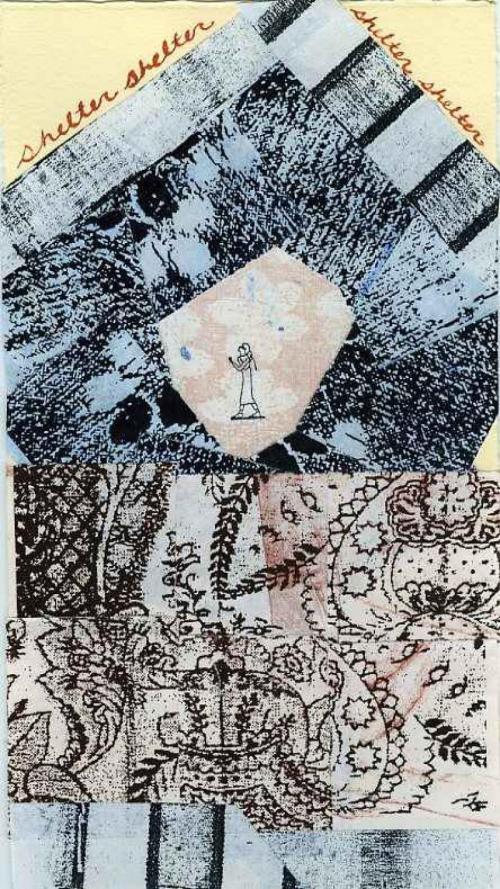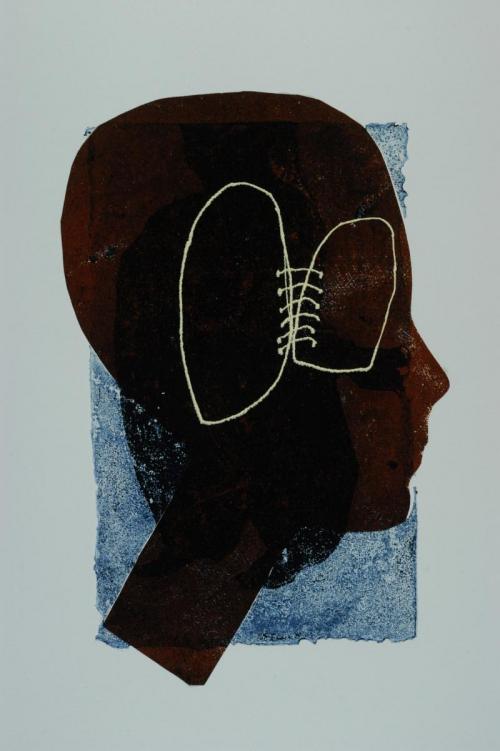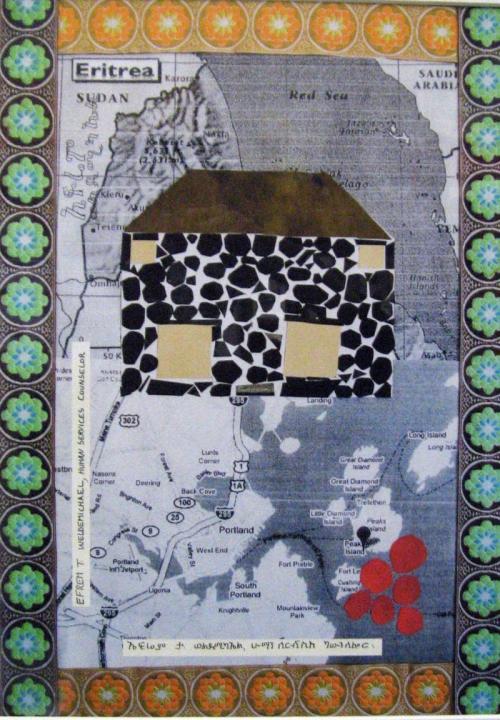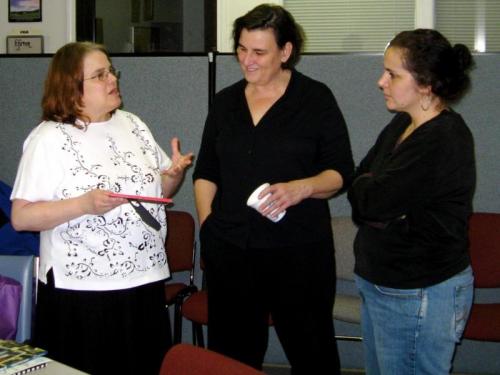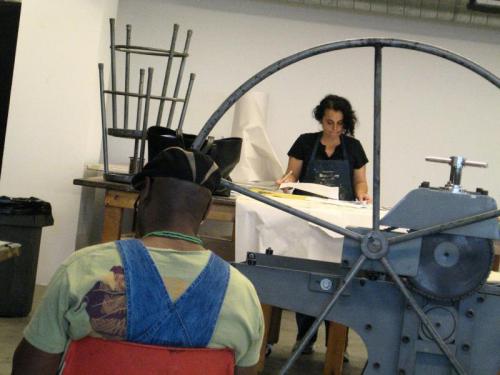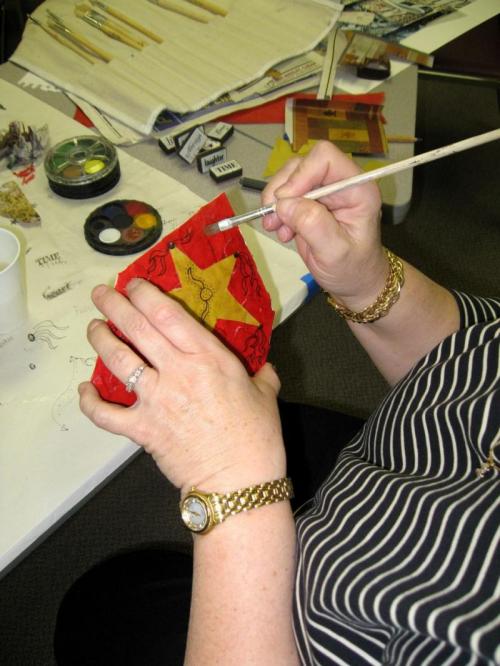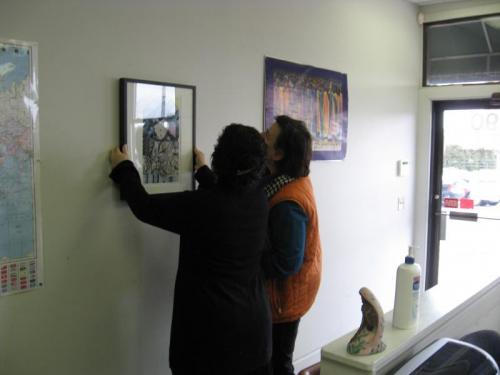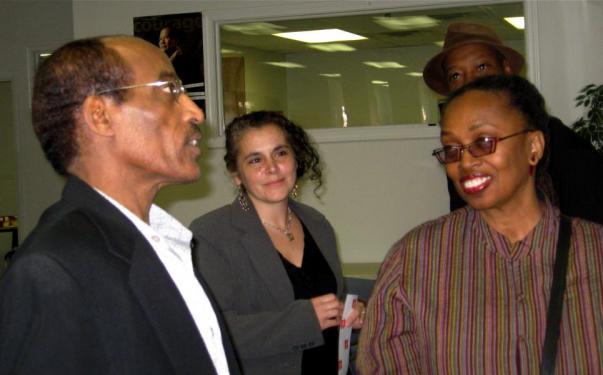Constant turn-over of the CNAs at a city-owned residential health facility is disruptive and expensive. Art At Work’s research revealed that a lack of respect from other employees was a significant factor. Ties That Bind set out to discover whether posters about individual CNAs’ life stories displayed in ’staff-only’ locations would make a difference.
Four multi-layered prints created by staff from Immigration & Refugee Services that focused on their individual heritages.
With the support of printmaker and bookmaker Elizabeth Jabar, Immigration & Refugee Services staff created four multi-layered prints that focused on their individual heritages (Scots, Eritrean, Somali and German/Dutch). The prints hang in the conference room that their department shares with General Assistance, City Hall, and the Barron Center.
From the first Art At Work workshop, the staff’s strong sense of public service and caring has been evident. Each participant has shared powerful stories about what brought them to their work and how they continue to sustain themselves. The challenges are impressive and the employees’ ability to effect change is disappointing, leading to a high rate of turnover in many of the jobs. The impact of this high turnover is felt because of the importance of having a tight working team, the cost of training, the legal requirements re: staffing, and the critical nature of much of the work. Additionally, there is the rarely discussed effects of dedicating oneself to work that is so misunderstood and misrepresented by the general public.
The greatest challenge that Art At Work has had isn’t finding people who would like to participate, but finding the time for overworked municipal workers to come to participate. Strategies that have we’ve tried have included meeting during lunch time (which doesn’t allow enough time for the deeper gains) meeting at staggered hour and a half workshops; using individual sketchbooks to keep the work portable; and setting up an area onsite with arts materials so the participants can work there in between the workshops.
We begin our workshops with Health and Human Service Department employees with questions to stir dialogue and bridge barriers. City employees respond with work stories and images from with their own cultural traditions such as maps, photographs, textile patterns, or iconic symbols. They explore their own heritage as a dynamic tradition, and at the same time learn about the cultures of their co-workers.
Sharing the journey, excited for themselves and for each other, they build a deeper understanding of who they are together and how that brings them closer and makes them more effective as a team. Every workshop has been powerful. The prints that the participants have made are hung in the offices, staff and conference rooms throughout the city. The stories and images also became a Ties That Bind blog on the City’s and Art At Work’s website. The workshop assignments included interviewing co-workers about their heritages, asking our original questions and adding ones we developed as a group, as well as research into Portland’s past.
New prints, books, blog postings will be created representing a wider and wider number of employees, generating a cultural map of the department that recognizes diversity as a strength and asset. Marty’s residency in the Health and Human Services Department was particularly exciting because it has the most diverse group of employees of any city department. Our work plays a powerful role in re-orienting city workers, politicians, and citizens to the reality of Portland’s cultural diversity.
Marty’s years of work in community arts has confirmed her belief that changing perceptions is a key element in creating new possibilities – possibilities that the city can embrace and leverage in ways that benefit the long-term health of everyone.


